Online shopping nowadays has become an indispensable part of our lives since a million eCommerce stores were built by 2024, contributing over 6 trillion dollars to global sales according to a Forbes report.
Why should choose Shopify to start our store, and how can you empower your store with this platform? This article will tell you everything you want to know.
Why Choose Shopify for Your eCommerce Store?
You cannot run an online business without deciding which platform your business will run on.
Imagine launching your online store with a platform that feels less like a steep tech challenge and more like a friendly sidekick cheering you on every step of the way.
That’s Shopify for you—a solution designed to make eCommerce as natural as pie.
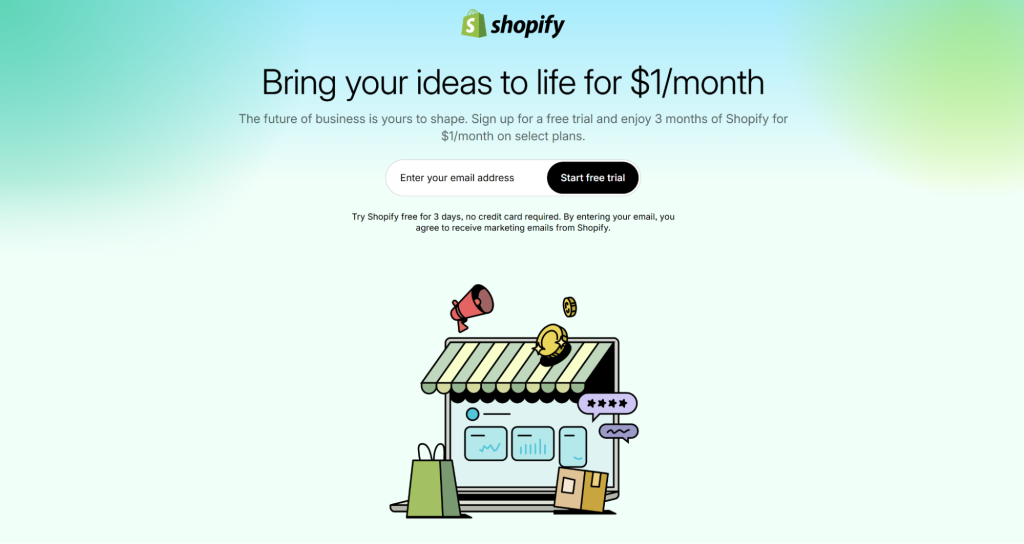
- Easy Setup: With its simple drag-and-drop tools, you can set up your store in no time—even if you’re not tech-savvy.
- All-in-One Solution: Shopify bundles everything you need into one place: from customizable themes to built-in payment and shipping options, it streamlines your workflow so you can concentrate on your products.
- Grows With You: Whether you’re just starting out or scaling up, Shopify adapts to your needs with flexible plans that grow alongside your business.
- Brand Your Way: Create a store that’s as unique as your brand. With plenty of customization options—no coding required—you can design a look that truly reflects your style.
- Rock-Solid Reliability: Enjoy peace of mind with reliable hosting, fast load times, and top-notch security to keep your store and customer data safe.
- Always Here for You: From 24/7 support to an active community of fellow entrepreneurs, help is always just a click away.
A Builtwith survey shows that since 2006, Shopify has been chosen as the ideal platform to start an eCommerce store, with up to 4 million active users worldwide. With Shopify, you can get help from eCommerce experts and grow your store with confidence!
8 Stages to Start Your eCommerce Store with Shopify
Now, let’s find out the comprehensive guide on how to build an eCommerce store on Shopify. There are eight stages:
- Stage 1: Planning your Shopify eCommerce store
- Stage 2: Setting Up Your Shopify Store
- Stage 3: Customizing the store appearance
- Stage 4: Adding Products
- Stage 5: Setting Up Payments Gateways
- Stage 6: Setting Up Shipping and Tracking Options
- Stage 7: Marketing Your Shopify Store
- Stage 8: Launching Your Shopify Store
Stage 1: Planning Your Shopify eCommerce Store
This is the foundation stage you need to implement when building a Shopify eCommerce store. This consists of several steps:
- Step 1: Seek Your Niche and Target Audience
- Step 2: Create a Business Plan
- Step 3: Develop a Unique Brand Identity
Step 1: Identify Your Niche and Target Audience
Obviously, when starting a business, we need to know what customer type we will serve and engage.
A target audience refers to the group of people interested in your store and being ready to buy your products.
Think of starting your online store like throwing a party. You wouldn’t just invite everyone and hope for the best, right? You’d think about:
- What kind of party is it? (That’s your niche—what kind of “thing” are you selling?)
- Who do you want to come? (That’s your target audience—who are these “people” you want to sell to?)
If you get those two things right, your party (aka your store) is way more likely to be a success!
Part 1: Niche – Finding Your “Party Theme” (What to Sell?)
Your niche is basically what cool stuff you are going to sell. Don’t try to sell everything to everyone at once. It’s way easier and smarter to focus. Here’s how to find your “thing”:
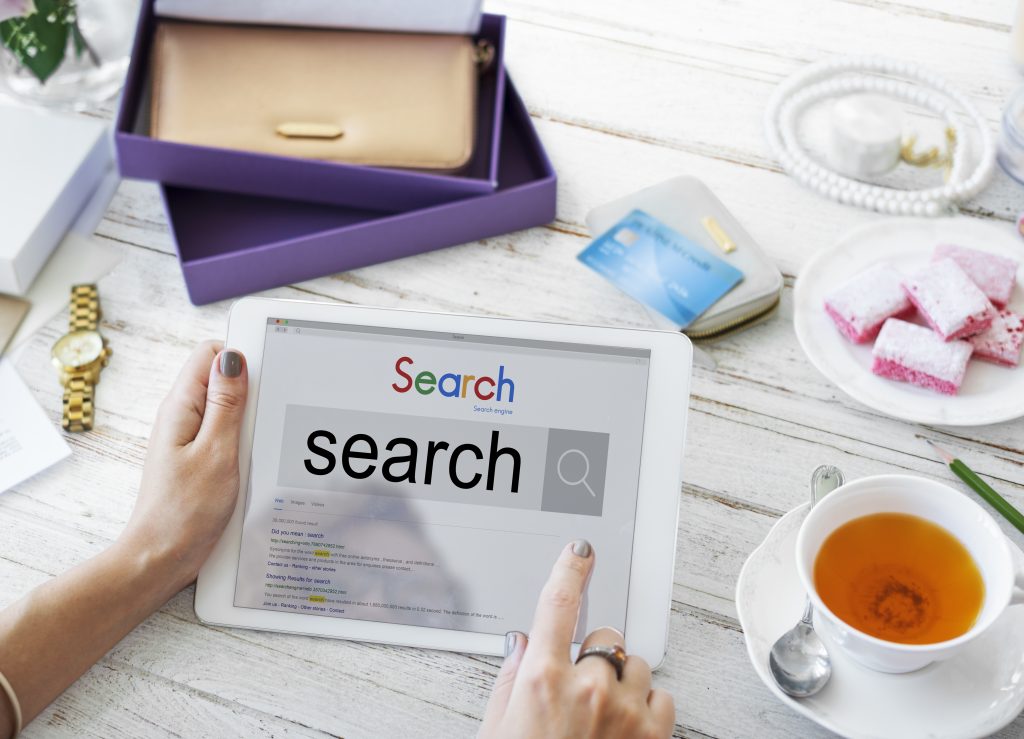
- “What do you geek out about?” Seriously. What do you love? Hobbies? Stuff you know a ton about? Passion makes this way more fun, and knowledge is power! Think: “I’m obsessed with plants.” “I’m a coffee snob,” “I live in workout clothes.”
- “Is anyone else into this stuff? (and buying it?)” Quick check – are other people searching for this kind of thing online? Google a bit! Are there stores already doing this? That’s actually good—it means people want it! Think: “Are people actually buying organic dog shampoo?”
- “Can you be a little bit different?” Okay, lots of people sell dog stuff. But could you be the place for eco-friendly dog toys? Or super stylish dog raincoats? Be a little special, a little unique. Think: “Instead of ‘dog stuff,’ how about stylish rain gear for tiny dogs’?”
- “Can you actually make money doing this?” Let’s be real—you gotta eat! Can you get your “thing” for a price that lets you sell it and still make a bit extra? Will people keep buying your “thing”? Think: “Are those fancy raincoat fabrics going to break the bank, or can I price these so people buy and I still make some cash?”
- Instead of “pet stuff,” maybe you land on “stylish, eco-friendly raincoats for small dogs in cities.” Way more focused, right?
Part 2: Target Audience – Finding Your “Party Guests” (Who Are You Selling to?)
Okay, you know your “party theme” (niche). Now, who’s coming? Your target audience is just whom you want to sell to. Knowing them means you can talk to them right, show up where they are, and make stuff they actually want.

- “Imagine your PERFECT customer. Who are they?” Give them a name, age, where they live, what they do, and what they like. Go beyond just “people who like dogs.” Get specific! Think: “Okay, my perfect raincoat buyer… her name is Sarah, she’s 30, lives in a city apartment, loves her little chihuahua, and cares about the planet.”
- “What do they care about? What bugs them?” What are their interests? What’s their style? What problems do they have that your “thing” can fix? Think: “Sarah cares about looking good and keeping her dog dry in the rain, but also doesn’t want to buy something that’s going to fall apart or harm the environment. She’s tired of bulky, ugly dog raincoats.”
- “Where do they hang out online?” Instagram? Facebook groups? Pinterest? Where are these “Sarahs” spending their time online? Knowing this is GOLD for knowing where to find them later! Think: “Sarah’s probably on Instagram, following dog accounts and eco-friendly brands, maybe reading a few pet blogs.”
- “What do they NEED from you?” Not just your product, but what else? Do they need the info? Good photos? Easy shopping? Fast shipping? Think about the whole experience from their eyes. Think: “Sarah needs to see cute pics of dogs in raincoats, know they’re actually waterproof, and easy to order online.”
- You found your “People”! Now you know you’re not selling to everyone; you’re talking to “Sarah”—and” people like her. It makes things WAY easier to focus on, right?
Step 2: Create a Business Plan
Creating a business plan sounds intimidating, right? Like something only serious business folks in suits do in fancy boardrooms. But honestly, for you and your awesome eCommerce store idea? It’s more like creating a roadmap for your adventure. Think of it as your personal GPS for getting from “cool idea” to “successful online business.”
It’s not about writing a super formal, 50-page document (unless you really want to!). It’s about getting your thoughts organized, figuring out the important stuff, and setting yourself up for success. You can read more details on how to make a business plan that’s actually useful for your Shopify store dream here.
Step 3: Develop a Unique Brand Identity
Identifying the suitable niche and target customer, creating the business plan—the next thing you need to make a plan for your Shopify eCommerce store is your brand identity.
What would it be? Cool and edgy? Warm and cozy? Super helpful and smart? Figuring this out is your brand identity. It’s what makes people go, “Oh yeah, that’s [Your Store Name]!”
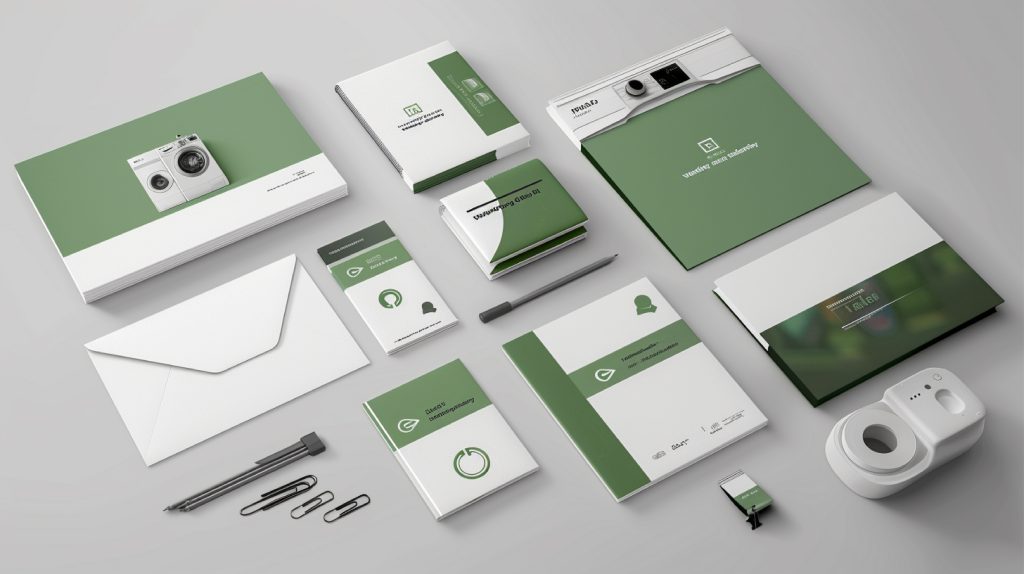
Here’s the super simple breakdown:
- Why You? The “heart” of your brand. Forget just selling stuff. Why are you doing this? What do you truly care about? What good do you want to put out there? Example: Not just candles, but helping people chill out and find little moments of peace. Your “why” is your brand’s heartbeat.
- Who’s your dream customer? Your “bestie” buyer. Who are you really trying to reach? Imagine your perfect customer—what are they like? What do they love? What are they kind of annoyed by? Knowing them means you can make stuff they actually dig.
- Give your brand personality! Is it fun, fancy, or friendly? If your brand were a person, would it be the life of the party, the wise old friend, or the super stylish one? Choose a few words to describe your brand’s vibe. Think: Playful? Simple? Down-to-earth? Chic? This vibe guides everything.
- Make it look like “you”! Your visual style. This is the fun part, including:
- Logo: Your brand’s face. Could you keep it simple and memorable? Think of icons or cool fonts.
- Colors: Colors have feelings! Pick a few that match your vibe. Chill vibe? Maybe blues and greens. Fun vibe? Bright yellows and pinks.
- Fonts: Fonts have moods too! Choose ones that feel like “you.”
- Photos: Snappy product pics? Lifestyle shots? Make them all have the same feel. Like you’re creating your own little world.
- Talk like “You”! your brand voice. How does your brand “talk” to people? Friendly? Funny? Super helpful? Write website stuff and social posts like you’re chatting, not like a robot. Be consistent!
- Tell your story! Why should people care? Everyone loves a good story. Why did you start this? What makes you tick? Let people in on your journey; it makes you real and relatable. Sprinkle your story on your “About Us” page and in your posts.
- Be “you” everywhere! Make it all match. Slap your brand style on everything—your Shopify store look, your social media, and even your thank-you notes. Make it all feel like it’s coming from the same awesome “you-nique” place!
Real Talk? Brand identity isn’t overnight magic. It’s about figuring out your heart, knowing your people, and letting your personality shine. Don’t stress it—have fun making your Shopify store a real reflection of you and what you’re all about!
Now, you have completed making a plan. To make this come true, let’s go to stage 2: Creating your Shopify store.
Stage 2: Setting Up Your Shopify Store
First things first, of course, open your Shopify store and complete your store basics.
When accessing your store, you need to go to the settings to manage some essential tasks, like:
- Setting some basic info like store name, currency, address, etc.
- Naming your store domain
- Select your store hosting
- Open your business checking account
- Register business
Don’t forget to get familiar with the Shopify admin panel.
Stage 3: Customizing Your Store’s Appearance
The next stage of your online store creation process belongs to customization, which lets you personalize your Shopify storefront. Your shop requires decoration to become welcoming and display your brand identity. Your Shopify store requires attention to its visual components as well as layout organization for technical screens and personal screens. Your store needs this implementation plan to develop into a visual masterpiece:
Step 1: Selecting a Shopify Theme
The selection of your Shopify theme resembles finding the perfect retail attire because it determines your business’s complete style.
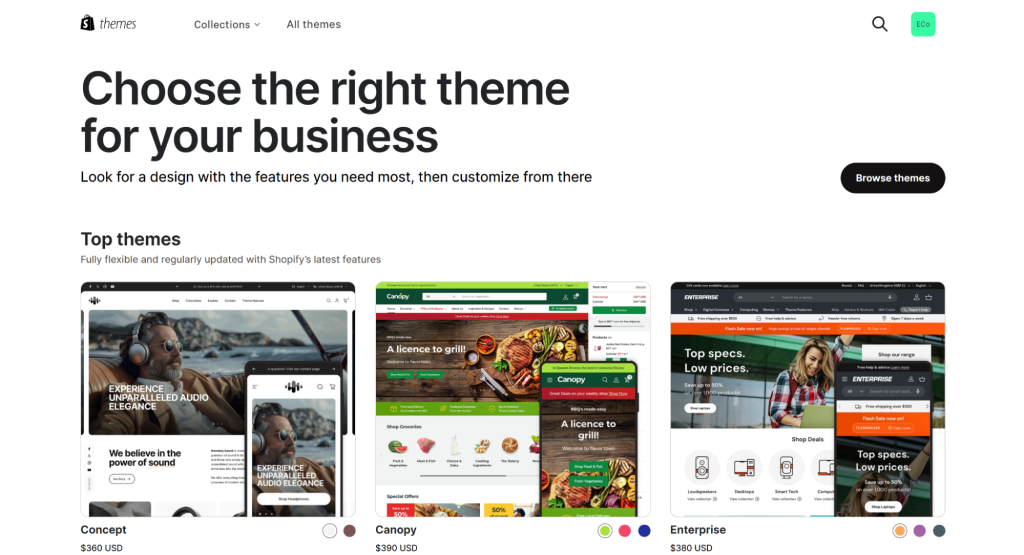
Shopify Theme Store awaits your visit to browse its theme collection. Think about what kind of vibe matches your brand and products. Do you want clean and modern? Fun and playful? Elegant and classic? Preview themes, see how they look with example products, and imagine your products in that setting.
Don’t stress about perfection right away—especially if you’re starting; a free theme can be fantastic.
Step 2: Personalizing Your Store’s Layout
After selecting a suitable theme, it’s time to start customizing your store look that fits your brand identity.
From the Shopify admin, select “Online store” > Theme, then hit the “Customize” button on your chosen theme.

Next, you go inside the theme editor. You can now add new content for your ideal pages and change their design.
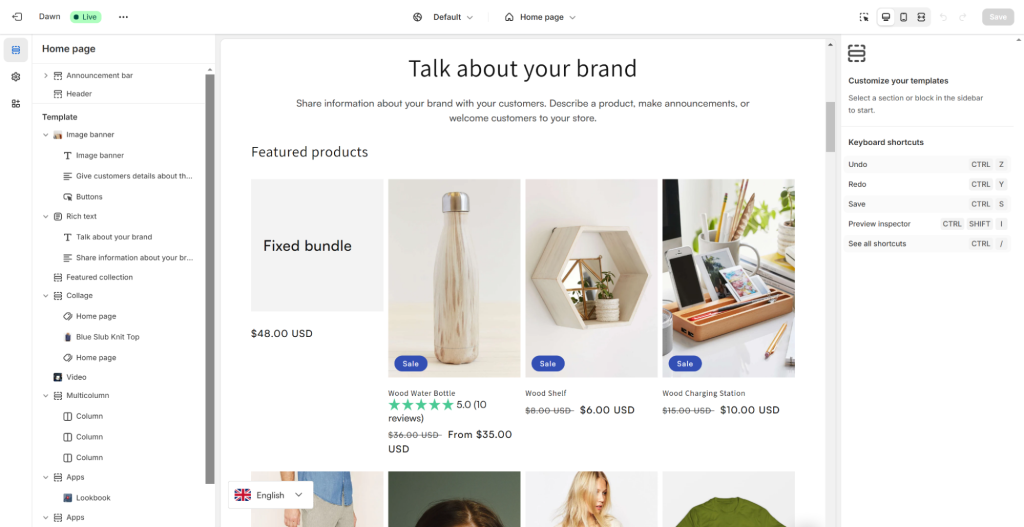
Bonus: Unlock your page customizing path with No-coding Page Builder.
While Shopify’s customizing ability may be limited somehow, real design magic emerges from page builder applications.
The leading Shopify Page Builders, like EComposer, allow users like you to build pages through drag-and-drop functionality and implement unique webpage elements without developing code. If you have limited web design skills, don’t worry! Using the pre-made sections that EComposer provides alongside its easy-to-use editing system allows you to design your pages effortlessly. With the power of EComposer, you can achieve design abilities even if you do not consider yourself creative in design.
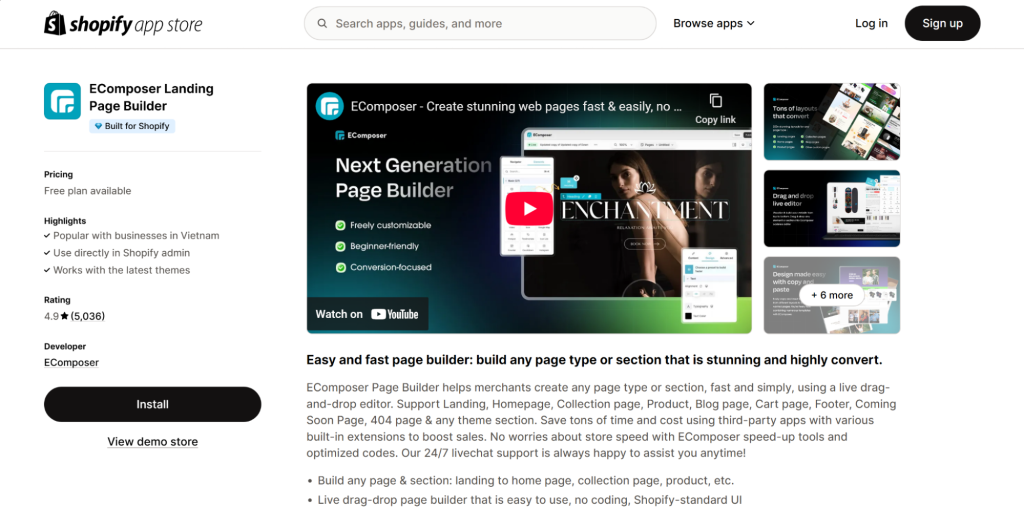
Step 2: Personalizing Your Store’s LayoutMobile Optimization Tips:
Quick fact: 72% of online buys happen on phones! Yep, phones rule shopping. So, if your Shopify store isn’t awesome on mobile, you’re missing out big time. Let’s make sure your store is phone-friendly:
- Keep it clean & easy: Think simple! Less text, clear sections, and space to breathe on the page. Tiny text and crowded stuff? The mobile shopper says, “Nope.” Clean and easy wins on phones.
- Speed matters BIG time: Phone users are on the go. Slow pages? They’re gone. Shrink images and keep them light and fast. Fast load = happy customers who buy.
- Finger-friendly buttons (big & clickable): Fingers need space! Make buttons and links big and easy to tap on phones. Tiny links? Annoying! Think big and spaced out.
- Test on REAL phones (Your phone, friends’ phones!): Computer “mobile view” is okay, but it’s not real life. Grab your phone and browse your store like a shopper. Easy to use? Smooth? Ask friends to test it, too! Real phone testing = real mobile-friendly store!
Stage 4: Adding Products to Your Store
Your Shopify store requires product listing to become a profit-generating platform. Let’s cut to the chase:
Step 1: Crafting Compelling Product Descriptions
The written description functions as the key sales presentation on your website, so ensure each sentence carries weight. Customers value what your product offers them rather than what it includes.
To express this message, you can target one specific buyer through descriptions written in their language and focusing on the solutions to their problems.
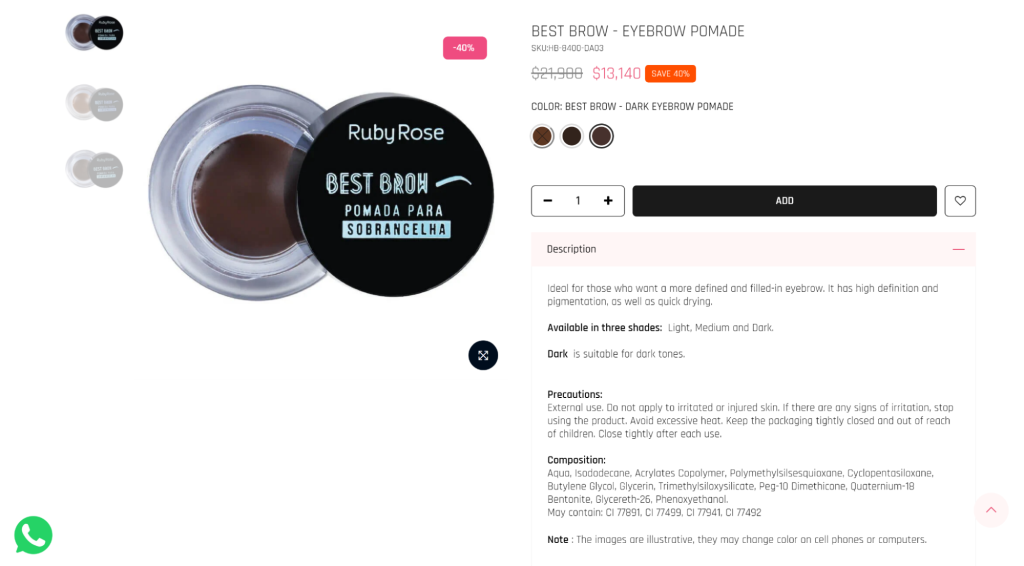
For example, the RubyRose Cosmetics team explains that their Eyebrow Pomade targets customers who love defined and filled-in eyebrows and quick-drying products.
Natural keyword use helps you find customers in online searches, but your descriptions should be easy to read through short, scannable text. Infuse your brand personality throughout descriptions as a way to establish customer relationships.
Step 2: Making High-Quality Images for Products
Your business relies on product images to establish its virtual storefront through pictures that should be perfect.
Natural light sources should be used because they produce clear and attractive images. Display your product at different positions so shoppers can see every detail of it.
A professional appearance matters for your image, so phones can help you achieve this objective, and lifestyle product illustrations should stimulate purchasing responses. You should always optimize product images through size optimization because mobile users need quick page loading.
Step 3: Setting Competitive Prices
Competitive pricing plays an essential role in establishing prices that match the market well.
Understanding your business costs allows you to achieve a profit margin.
Therefore, first, research the pricing approaches used by competitors for similar products in order to establish competitive rates. Your price point should correspond to the affordable or luxurious character of your brand identity. Your customers should understand the genuine worth you bring them.
Your business will profit from testing various pricing models to achieve its maximum sales revenue potential.
Stage 5: Setting Up Payment Gateways
Want to get paid? Duh! You need a payment gateway – think of it as your online cash register. It handles the money stuff securely.
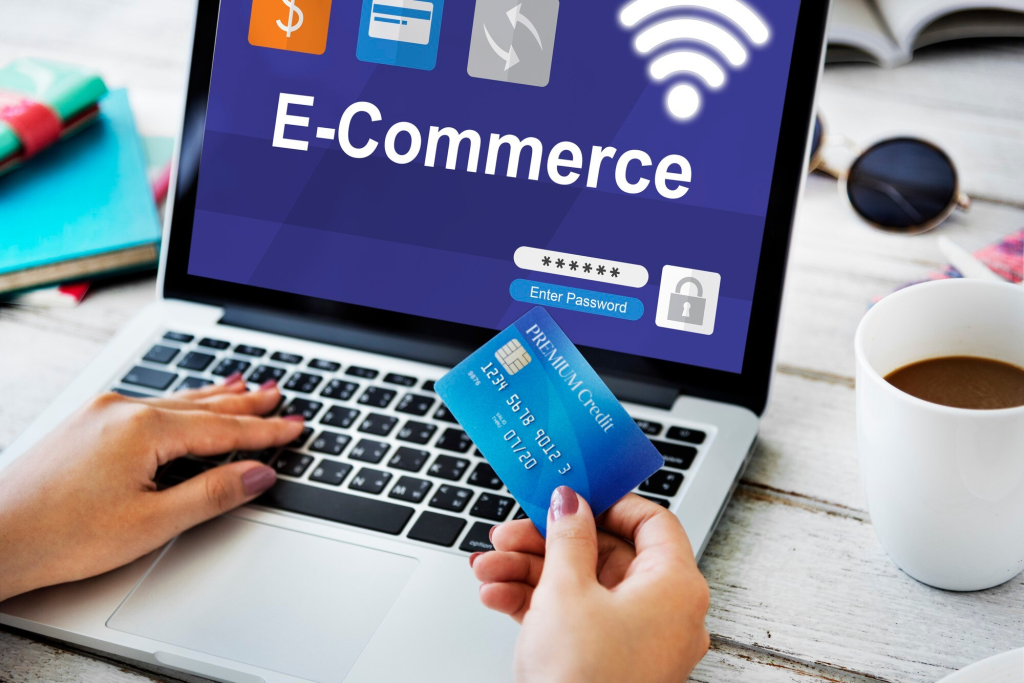
- Shopify payments: Shopify Payments is their gateway. If it’s in your country, use it! Simple setup and often lowers fees. Great for beginners.
- Other payment options (PayPal, Stripe, etc.): No Shopify Payments? No problem. Use big names like PayPal and Stripe. Customers trust them. Easy to connect to Shopify.
- Watch those fees: Gateways charge fees. Compare a few to find what fits your budget. Shopify Payments often wins on fees.
- TEST payments first! (Don’t skip this!): Before launch, TEST your payment setup! Use “test mode” to make sure money flows right and orders work. Catch problems before real customers do!
Stage 6: Setting Up Shipping and Tracking Options
Payments sorted; now how to ship? Good shipping is key to happy buyers. No one wants surprise costs or delivery drama.
- Shipping zones: Decide where you ship. Just your country? Worldwide? Set up zones like “USA,” “Europe,” and “Worldwide” in Shopify. Think about your audience.
- Shipping carriers: Major carriers include USPS, UPS, FedEx, and DHL. Each offers different services based on speed, cost, and destination coverage.
- Shipping rates: How much to charge for shipping?
- Free shipping: customers LOVE free shipping! Boosts sales. Build the cost into prices or set order minimums.
- Flat rate: one set price for shipping. Easy to understand. Good for simple stuff.
- Carrier rates (real-time): Most accurate, especially if you sell things of different sizes. Shopify connects to USPS, UPS, etc., for live quotes. Need to enter product weights/sizes for this.
- Packaging: Packaging size/weight affects shipping prices, especially with real-time rates. Keep it efficient.
- Package tracking: A dedicated package tracking app allows you to monitor shipments and share delivery updates with customers. It can automatically sync orders, retrieve tracking data from carriers, and display the latest shipment status including location and estimated delivery dates.
Stage 7: Marketing Your Shopify Store
Your Shopify store is ready for customers, so let’s market it effectively! This stage is about getting attention and turning that attention into sales for your awesome online shop. Time to bring in the buyers!
SEO Basics: Get Found on Google
SEO is your gateway to free traffic from Google. By strategically using keywords (customer search terms) in your descriptions, titles, and blogs, you can significantly boost your visibility. Blogging on your niche can further enhance your SEO, attracting the right audience and boosting your online presence.
Social Media: Connect with Your Customers
Social media = customer connection & buzz. Find your audience on platforms like Instagram and Facebook. Plus, you should make your posts more engaging and use visual content consistently. Be social, reply, and build community. Try targeted social ads for wider reach.
Email Marketing: Direct Sales Powerhouse
Email marketing is a direct line to your customers and a powerful tool for driving sales. By building your list with enticing sign-up offers, sending welcome emails and valuable newsletters, and using abandoned cart emails to recover sales, you can establish a strong sales channel. eCommerce email marketing strategies are explored here to enhance your confidence in this approach further.
Paid Advertising: Amplify Your Reach
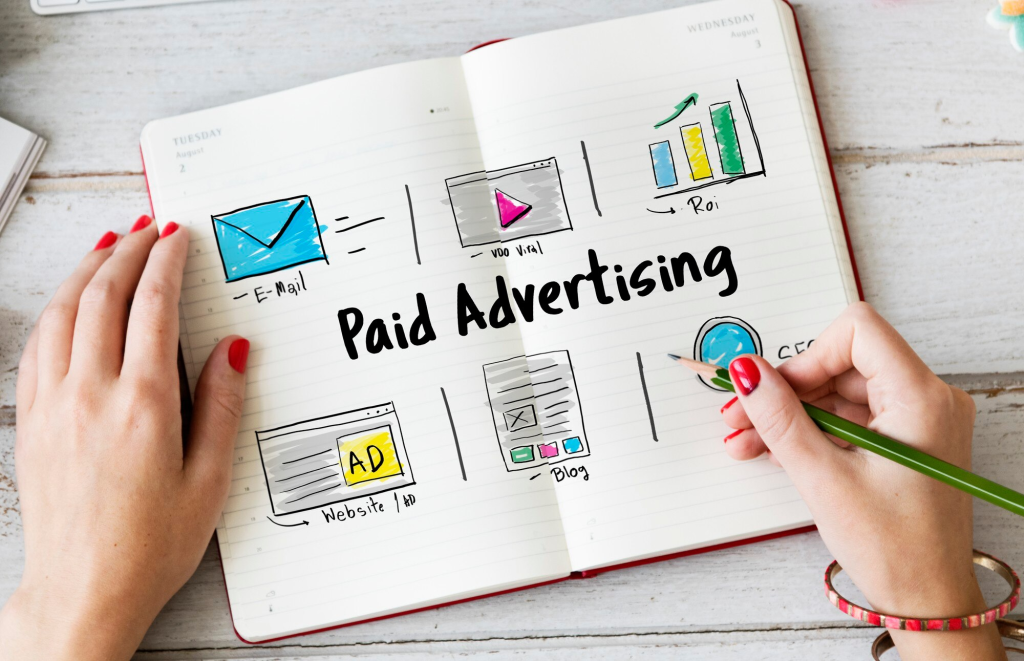
Paid ads = faster growth when ready. You can start targeted ads on Google/social media, then promote bestsellers. And don’t forget to track results and optimize ads. Not stopping on that, Ads can be an effective method for you to retarget website visitors.
Customer Experience: Best Marketing Secret
Remember, great customer experience is the best marketing secret. By providing fast, helpful support, offering easy returns, adding personal touches, and encouraging customer reviews for social proof, you can reassure your customers and build a loyal base.
Stage 8: Launching Your Shopify Store
Launch day is almost here! This is your final prep for a uniquely successful Shopify store launch. Let’s make sure your grand opening is flawless and yours.
Pre-Launch Checklist
Before you go live, rely on this comprehensive pre-launch checklist to ensure your store is uniquely ready and customer-delightful from day one. It’s your final, personal touch before opening doors, and it will leave you feeling fully prepared and confident for the big launch!
- Customer journey test: Walk your entire site like a new shopper. Check every link and every page. Ensure a smooth flow, easy navigation, and spot hiccups now. This thorough test will leave you feeling reassured and thorough in your preparations.
- Mobile Lens Examination: Test everything on your phone. Mobile shopping is huge – is your store flawless on smaller screens? This attention to detail will make you feel responsive and ready for the mobile shopping trend.
- Payment flow confirmation: Run a final test payment. Is payment processing smooth? Are orders recording correctly? Confirm that it’s working uniquely well.
- Shipping blueprint review: Re-check shipping zones and rates. Accurate? Tailored to your offerings? Clear shipping info is key.
- Legal corner check-up: Confirm that legal pages are present, accessible, and uniquely tailored to your policies. Not having these in place could lead to legal issues and loss of customer trust. Build trust and protect your business.
- Contact gateway validation: Test your “Contact Us” page. Is it easy to find and use? Ensure customers can uniquely reach you.
- Brand visual harmony assessment: Assess your favicon, logo, colors, and fonts. Is your branding consistent and uniquely polished across your store?
Testing and Debugging the Store
Testing is your personalized bug hunt. Find and fix issues before customers do. Be proactive, and be your quality expert!
- Browser & device diversity testing: Test on various browsers (Chrome, Firefox, Safari, Edge) and devices. Catch unique display issues early across different platforms.
- Simulated order gauntlet: Thoroughly test your checkout with varied scenarios. Smooth process? Error-free? Flawless checkout = more conversions for your unique store.
- Crowdsourced “mystery shopping”: Ask friends to “mystery shop” and give honest feedback. Fresh eyes spot things you might miss after building. Use customer feedback post-launch for ongoing unique improvements.
- Performance prowess evaluation: Check page load speed with tools like Google PageSpeed Insights. Fast loading, especially on mobile, is crucial for your uniquely performing store.
- Launch day vigilance protocol: Monitor your store closely after launch. Watch orders, customer queries, and analytics. Be uniquely ready to fix issues fast and provide stellar, personalized support. Understand initial customer behavior for unique post-launch adjustments.
Okay, your store is LIVE-congrats!
Keep Optimizing Your Store After Launching
Running your business like a car means treating store improvement as maintenance to achieve better performance and increased customer satisfaction.
Post-launch optimization means always learning and tweaking. Watch how your store performs, listen to your customers, and use what you find to make things better.
Check your Shopify stats – see what pages are popular, what’s not working, and where people click away.
Ask for customer feedback – reviews, surveys, social media chats – find out what they love and what’s clunky.
Then, use what you learn to make small, smart changes. Maybe you can rewrite product descriptions, simplify navigation, try new marketing ideas, or adjust what you sell.
Optimization isn’t about big changes all at once; it’s about small, steady improvements based on real data and real customer voices. Think of your Shopify store as something you keep nurturing, always making it better and better for your customers and your business!
Conclusion
Starting your dream eCommerce store with Shopify isn’t hard when you follow the advice presented here.
The process of starting to sell online through Shopify is no more complex than the common belief suggests. This guide (together with the presented advice) helps you build an exceptional online platform for your brand. Your knowledge includes designing an impressive store, adding appealing products, setting up payment, shipping preparation, and initial marketing strategies.
Open the Shopify store now and kick start building your eCommerce business and gather high sales.
The TrackingMore team shares insights on logistics tracking technology, industry trends, and e-commerce logistics solutions to help businesses streamline shipment tracking and enhance customer post-purchase experience.